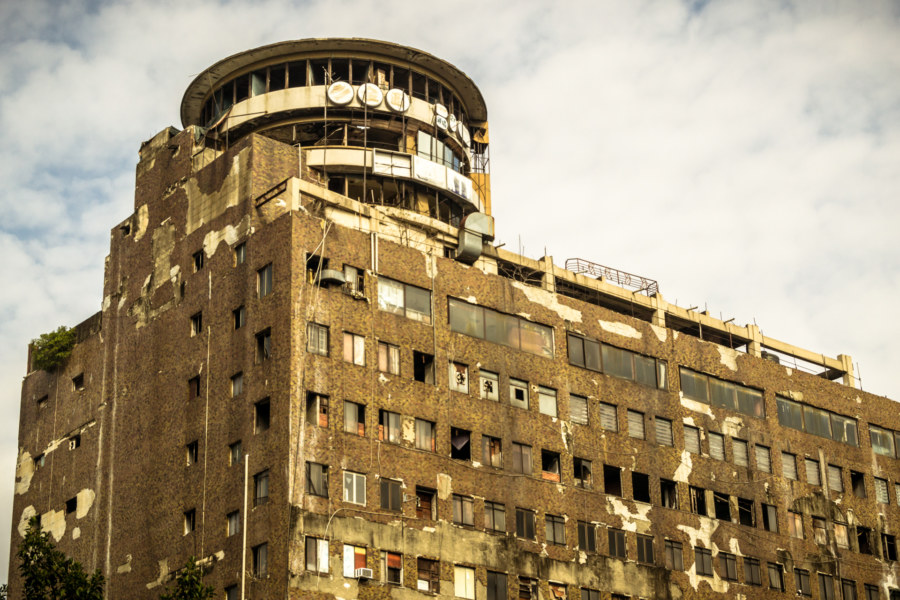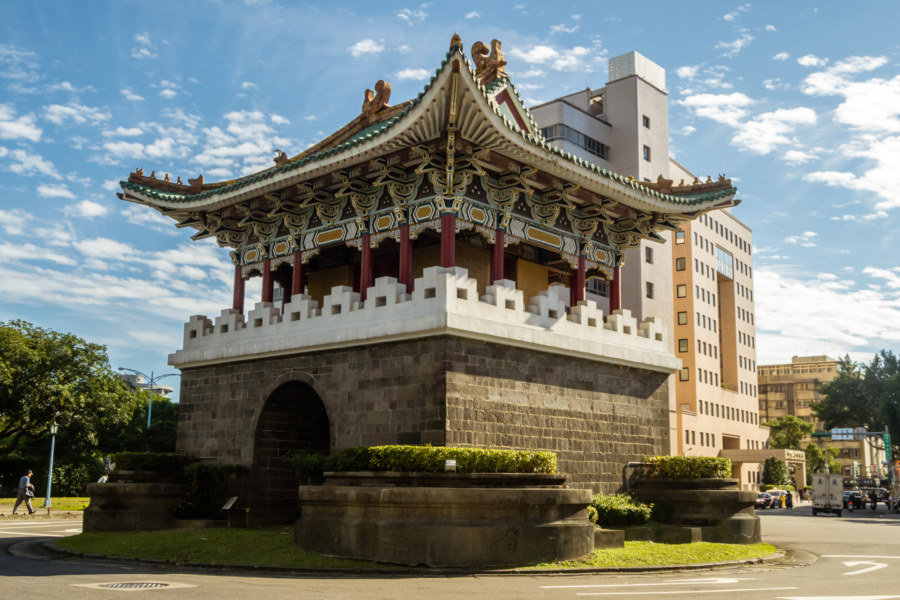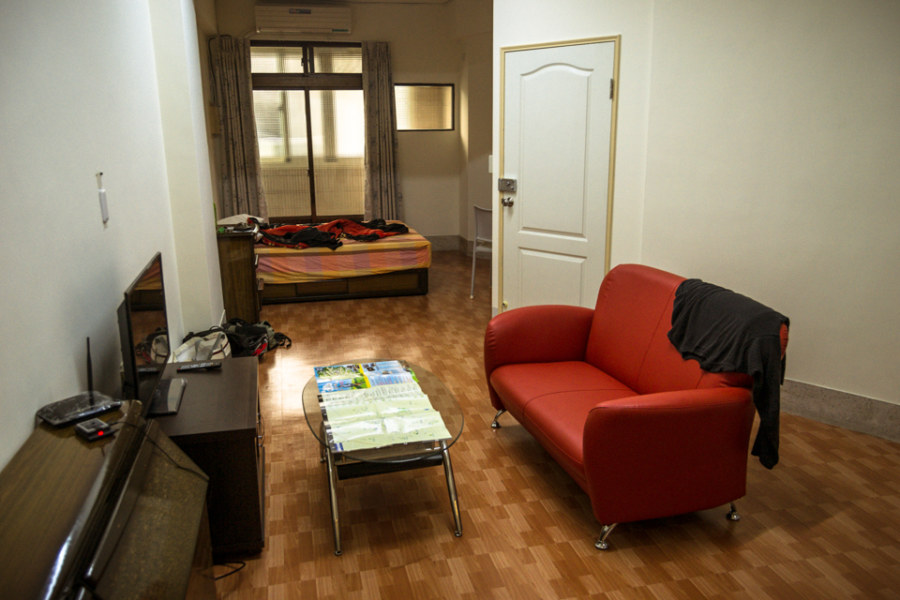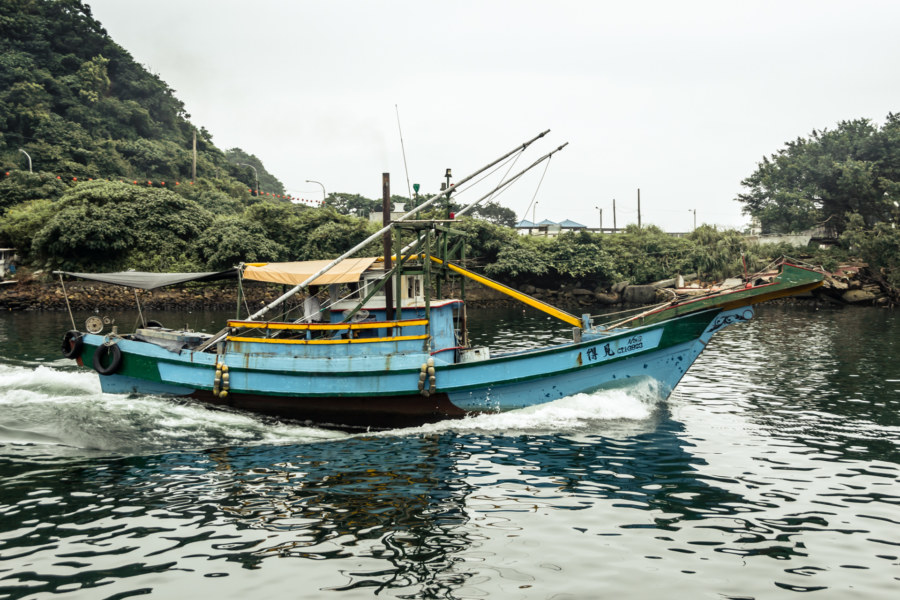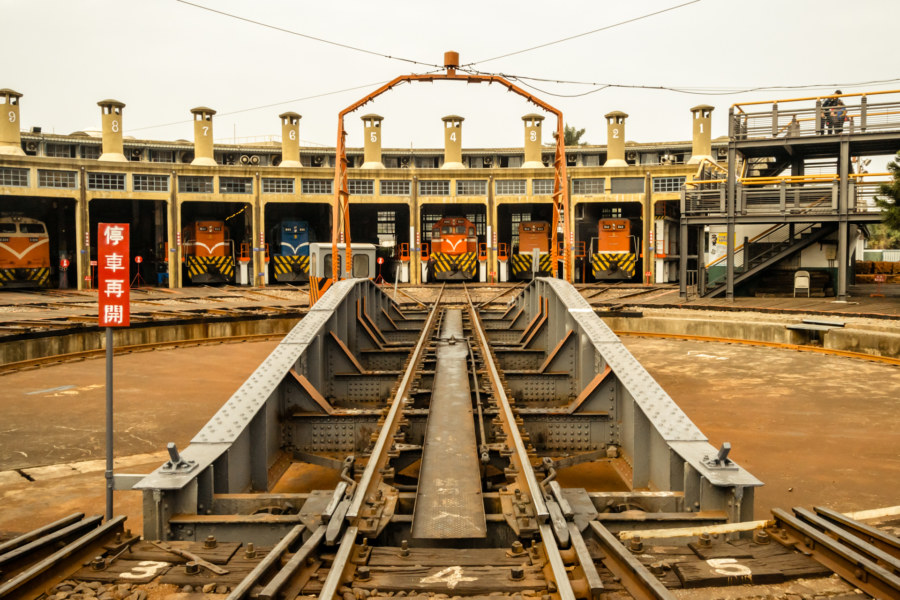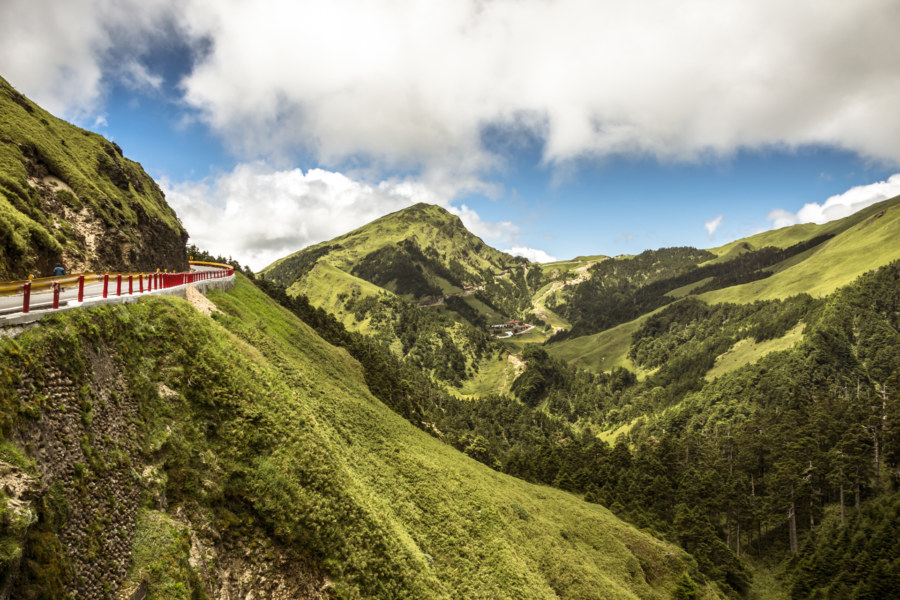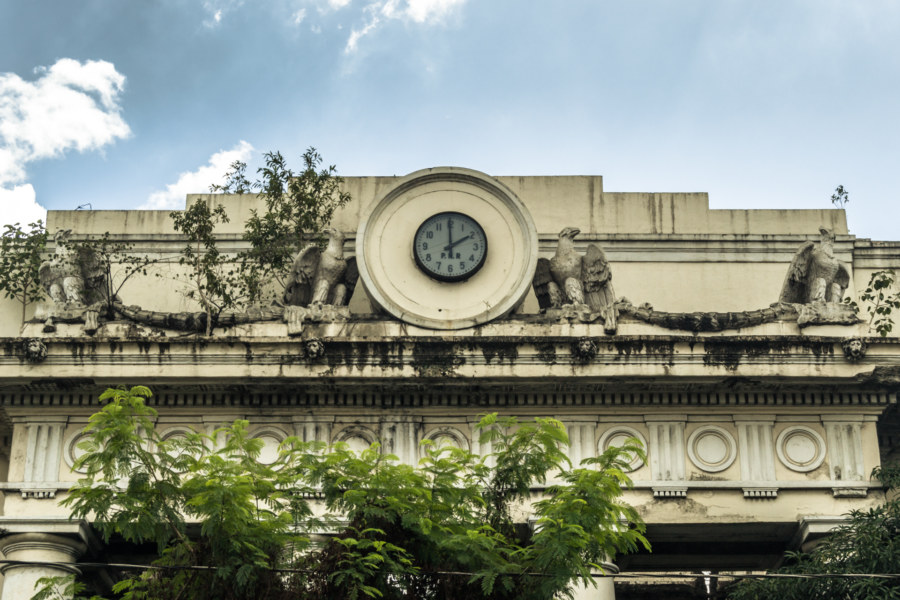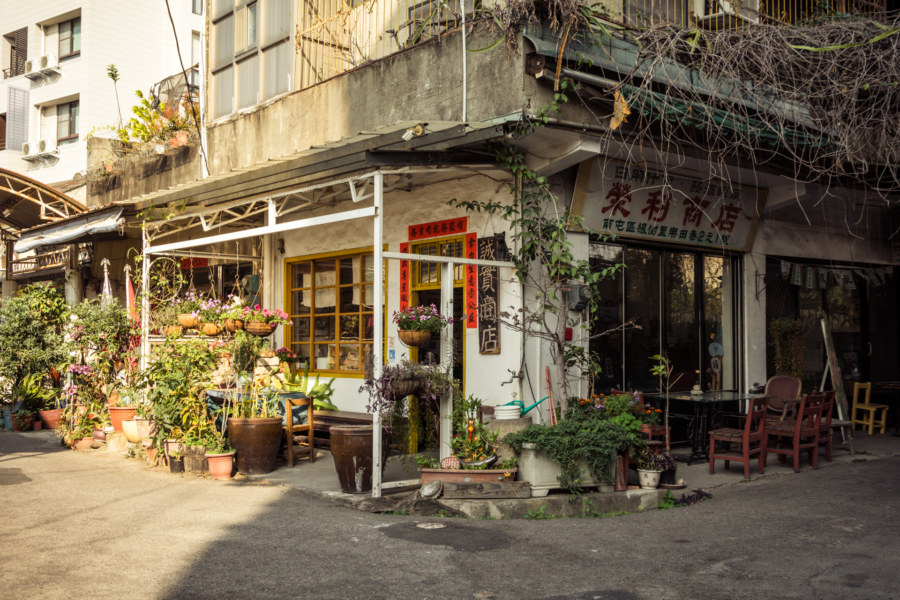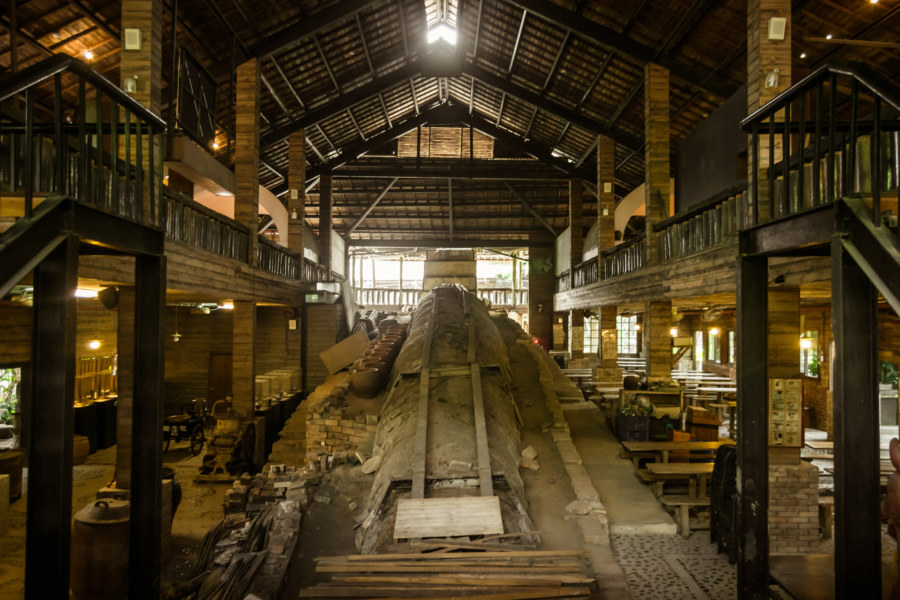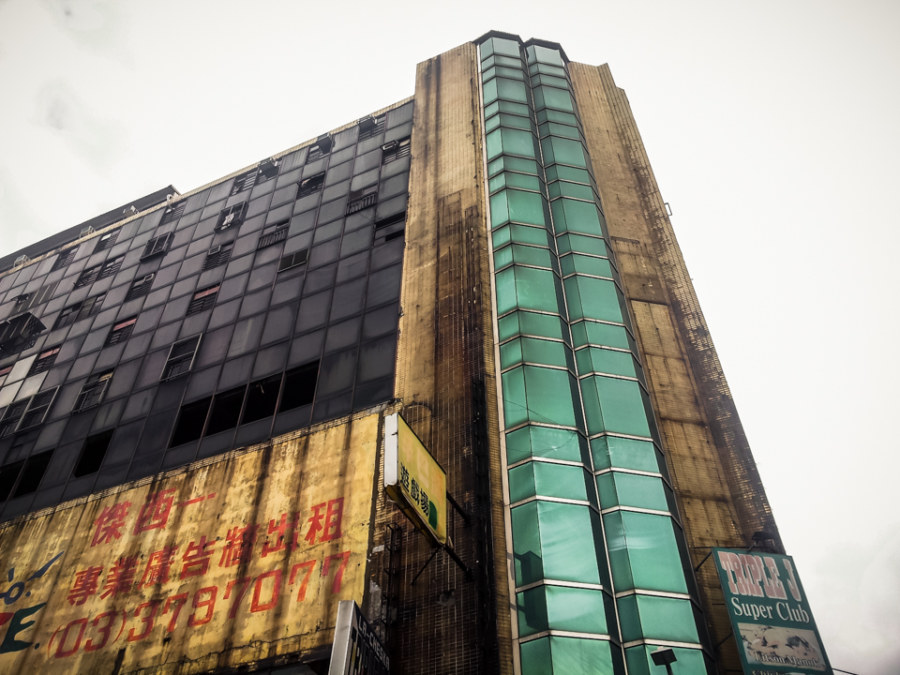The Qiānyuè Building 千越大樓 is one of the most recognizable ruins in central Taiwan. Located only a short distance from Taichung Station 台中車站, it is impossible to miss if you bother to look up at some point while walking deeper into the city. This mixed-use commercial and residential high-rise was originally built in the 1970s and, thanks to its location at the very heart of the famous Taichung Electronics Street 台中電子街商圈, reached its apex during the consumer electronics boom of the late 1980s and early 1990s.
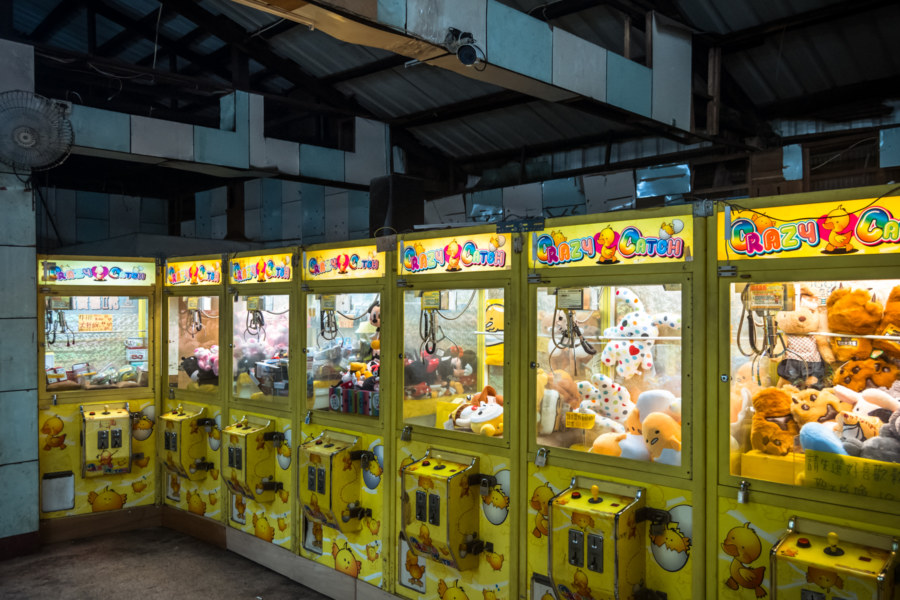
Anything that doesn't really fit anywhere else. The odds and ends, miscellaneous leftovers and random junk.
Subterms
Taipei Xiaonanmen 臺北府城小南門
Today is winter solstice, the shortest day of the year in the northern hemisphere, and it is a record-breaking 30°C in Taipei. In Chinese culture it is customary to consume tāngyuán (湯圓, glutinous rice balls typically immersed in hot, sweet soup) on winter solstice, better known to locals as Dōngzhì (冬至), a time when families gather together and celebrate growing one year older. Since I have no family here I will be lining up at 36 Yuánzǐ Shop (三六圓仔店) for a bowl sometime later on—though I might just skip this particular ritual if the line-up is too crazy. Two years ago I was informed, contrary to expectations, that you won’t actually age without eating tangyuan on dongzhi. If I miss it this year I suppose I won’t mind.
Renting an Apartment in Changhua City
Last winter I stayed in an apartment near the train station in Changhua City for about six months. This post is all about that apartment: why I decided to move there, how I found the place, what it cost, what the amenities were like, and so on. I am sharing this information mainly for other non-Taiwanese and nomadic types interested in exiting the Taipei bubble without necessarily speaking a lot of (or any) Chinese or even knowing much about Taiwan. This isn’t meant to be an endorsement of living in such a place, it’s simply a straight-forward account of what it was like. But first of all, why move south? And why Changhua of all places?
Postcards From Nanfang’ao 南方澳明信片
Nánfāng’ào (南方澳) is a major fishing port in Su’ao, Yilan, on the east coast of Taiwan. It is located just south of the end of the Lányáng Plain (蘭陽平原), where a rocky headland juts out into the ocean to form a natural harbour. It opened in 1923 after development by the Japanese colonial authorities and is now considered one of the top fishing ports in the nation, often ranking in third place by measures unknown to me, and is particularly known for its record-breaking mackerel catch. Part of why the port is so productive has to do with the nutrient-rich Kuroshio Current (黑潮, literally “Black Stream”), which lies just offshore.
Changhua Roundhouse 彰化扇形車庫
One of the most extraordinary attractions in Taiwan is the historic Changhua Roundhouse 彰化扇形車庫, originally built in 1922 during Japanese colonial rule and still in operation today. Although information is hard to come by it seems that it might be the only roundhouse still operating in Asia—and certainly one of the oldest still in regular use anywhere in the world. Every other roundhouse I researched for this article has been abandoned, demolished, repurposed, or converted into a museum—and those rare few that are still operational have been mighty hard to date. As such, the Changhua Roundhouse is a dream to visit for a railway enthusiast like myself, particularly since the ambiance hasn’t been ruined by the sort of tacky treatment you’ll often find at Taiwanese tourist attractions. After signing in with the guard at the gate I had free run of the place—and as you can see from some of the following photos, nobody minded me getting shockingly close to moving trains as the mechanics went about their daily routines.
Crossing the Central Mountain Range of Taiwan 中央山脈機車之旅
In the summer of 2014 I was nearing the end of my first sojourn in Taiwan. By the beginning of August I would be in Canada for a wedding in the family with no idea what I’d be doing after that. Since I wasn’t sure if I would be returning to Taiwan I made vague plans to go on a road trip. With only about a week to go before my departure the weather took an ominous turn as Typhoon Matmo 麥德姆 barrelled toward the island. On July 20th, with the pressure of time bearing down on us, my girlfriend and I hopped on a 125cc scooter—the same kind of dinky, puttering scooter you see people riding around any Taiwanese town—and set out from Changhua with the goal of crossing the Central Mountain Range 中央山脈 at Wǔlíng 武陵, the highest paved (and publicly-accessible) mountain pass in Taiwan at 3,275 meters above sea level. With luck, time and weather permitting, we’d be able to visit Héhuānshān 合歡山 and maybe even drive down into the amazingly scenic Taroko Gorge 太魯閣峽谷 on the east side of the island.
Paco Railway Station
Paco Railway Station was built in Paco, Manila, in 1915 during the American colonial period. Designed by William E. Parsons, an American architect mainly known for his work in the Philippines, it remained in service until the mid-1990s when it was partly demolished by a developer intent on building a mall next door. The ruins of that project, never completed, can still be found next to the old station, spreading decay like a cancer through this part of the city.
Maple Community Honest Shop 楓樹社區誠實商店
Taichung is home to an unusual social experiment: the Honest Store 誠實商店 in the Fēngshù Community 楓樹社區 (literally “Maple Community”) of Nantun, Taiwan. According to roundTAIWANround (through which I discovered the place) it was once a general store of the traditional variety that you’ll still find scattered around the countryside and in older neighbourhoods. Such shops have been fading into history for years, unable to compete with the modern chains that have become symbols of Taiwan’s culture of convenience. The shop would have shut down had the owner not experimented with a new model: locally-sourced goods, financial transparency, and no paid staff, relying on the honesty of its patrons to stay in business.
Shuili Snake Kiln 水里蛇窯
The Shuili Snake Kiln 水里蛇窯 is a wood-fired pottery kiln on the outskirts of Shuili, Nantou. The name is derived from the kiln’s serpentine shape, though to my eyes it looks more like a slug than a snake. Founded in 1927 by master potter Lín Jiāngsōng 林江松, it remained a family business for generations before being opened to the public as a “ceramics park” in 1993.
First Dispatch From Zhongli
Last week I moved from Taipei to Zhongli, a mid-sized city of approximately half a million1 about 45 minutes down the Western Line 西部幹線 in the heart of Taoyuan. I have been all around the island but haven’t explored much of what you might call the “middle north”, the strongly Hakka-influenced area stretching from the rugged borders of New Taipei south to Taichung that includes Taoyuan, Hsinchu, and Miaoli. Perhaps by staying here awhile I will find opportunities to explore more of this part of Taiwan and fill in some blank spots on my personal map.
